I’m sure that everyone of you has faced a failure in your cooling system one way or another. This happens all the time and especially in BMW cars. I recall that I faced this situation couple times with my previous (precious) BMW E30. Luckily I didn’t face that situation in my E36 as I had to change my radiator couple months ago. I hope this will protect me from such failures for some time although the radiator is not the only thing that may fail 😉 . I want to keep your spirit high, so I’m not going to continue talking about these possible failures.
The article that I brought to you is a long one and because I know that some of you will feel bored (maybe hate me too, who knows ?!) for posting a wall of text. I decided to break this article into 3 posts. I will start of course with number 1 now and continue with number 2 and 3 in the next posts. So, stay tuned to this channel please 🙂
Enjoy the post and please please don’t hate me if you find it a little longer than you expected.
One often neglected task on many cars is the maintenance of the cooling system. In general, BMW recommends that you flush and clean out your cooling system once every 36 months, or approximately every three years. I like to perform this task on my own cars about once a year, or if I let it slip, once every two years. The reason for this is that old, exhausted coolant can actually cause irreversible damage to your engine components – I found this out firsthand when I recently replaced the head gasket on my ’93 325is. The previous owner didn’t look like he had changed the fluid once in the past ten years. As a result, there were many parts of the engine that were corroded and showing severe signs of wear.
A properly maintained cooling system must have a few things in order: adequate supply of coolant, a radiator that acts as a heat exchanger with the outside air, a fan or air flow source, a water pump to keep the coolant circulating, and a thermostat to regulate the engine at its optimum operating temperature. The coolant must also have the correct mixture and chemical compounds to promote heat transfer, protect against freezing, and also inhibit corrosion. To keep your BMW operating correctly, it’s important to check the level, strength, and overall condition of the coolant on a regular basis. You also need to change the coolant before it degrades to the point where it doesn’t perform it’s job adequately.
A fact that I keep hearing kicked around revolves around the reported findings of the U.S Department of Transportation, which states that cooling system failures are the leading cause of mechanical breakdowns on the highway. Not exactly surprising, since proper cooling maintenance is one of the most neglected areas of most cars.
Electrolysis
One failure mode associated with dirty coolant is known as electrolysis. Electrolysis occurs when stray electrical current routes itself through the engine coolant. The electricity is attempting to find the shortest path, and impurities in the coolant often generate a path of least resistance that the electricity travels across. The source of this stray electricity is often from electrical engine accessories which have not been properly grounded. A missing engine or transmission ground strap can also cause the coolant to become electrified. Sometimes the path of least resistance becomes a radiator, a heater hose, or even the heater core. These components are often well grounded, and offer a ground path from the engine to the chassis by means of the semi-conductive path of the coolant.
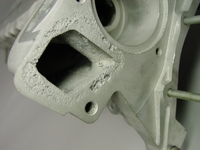
Electrolysis can destroy your engine quickly. Although it’s semi-normal to have very small amounts of voltage potential in your coolant system, values greater than about a tenth of a volt can start reactions between the coolant and the metal in your engine. In particular, electrolysis affects primarily aluminum engine components, resulting in pitting and scaring of the aluminum surface. This eating away of the metal can cause coolant system leaks, and in particular, radiator leaks around aluminum welds. Cast-iron components are also vulnerable, but typically the aluminum metal parts fail first. On BMWs in particular, electrolysis can be easily seen attacking aluminum cylinder heads. Figure 1 shows a picture of the thermostat area of a cylinder head that has been partially damaged by electrolysis. Notice how the aluminum has been eaten away, and eroded by the chemical/electrical reactions.
The process works somewhat like electrical discharge machines (EDM). These machines work by passing a large electrical current through metal, literally zapping away bits of material until nothing remains. Unfortunately, the electrolysis process works in a similar way, zapping bits of metal in proportion to the amount of electrical current passing through the coolant. A poorly grounded starter can literally destroy a radiator or head within a matter of weeks, depending upon how often the car is started. A smaller current drain, like an electric cooling fan, may slowing erode components over many months.
How can you test for electrolysis? Other than actually seeing visible signs of erosion, you can perform a current flow test. Connect the negative terminal of a voltmeter to the chassis ground. Test for adequate continuity by touching another point on the chassis – the resistance should be near to zero. With the engine cold and running, submerge the positive probe into the coolant tank, making sure that the probe does not touch any metal parts. The voltage should be less than .10 volts. If not, methodically turn off or unplug each electrical accessory until the reading reads below .10 volts. Have an assistant switch accessories (like the A/C compressor, heater blower, etc.) while you measure the voltage.
If an accessory doesn’t have an on/off switch, test it by temporarily running a ground from the housing of the accessory to the chassis. Ground each component and check the volt meter. If the wire restores a missing ground connection to the accessory, then you’ve found a component with a faulty ground.
During this test, be sure to check the starter. Not only will a poorly grounded starter struggle to turn over the engine, it will also zap away tremendous amounts of metal in your cooling system. Watch the meter carefully when starting the engine. Any voltage spike will indicate a faulty ground connection.
Coolant System Additives
Many people are rightly skeptical of coolant system additives – there are a lot of myths in the automotive industry. Luckily, the coolant system additives are in the category of good practice, for reasons I’ll explain here. It all begins with chemistry. Like today’s modern oils, many of today’s modern coolants incorporate some of the chemicals that help cooling and increase heat flow around your cooling system components. As more and more automotive components are made out of aluminum, and radiators become smaller, the use of these additives becomes more advantageous.
Aftermarket coolant system additives are known as surfactants. What is a surfactant? A surfactant or surface active agent, is a molecule that has a water-loving end (hydrophilic and water fearing end (hydrophobic). Localized boiling of coolant in the cylinder head can create large shock waves that can wreck havoc on your engine, particularly on aluminum components. Without going into too much boring detail, these surfactants also help to reduce the amount of air in the cooling system, and also control the amount of foam within the system.
In general, there are three main reasons why using these additives is beneficial to your cooling system. Firstly, they reduce harmful cavitations and foaming that may occur when your water pump is kicking out fluid at a rapid pace. This reduced foaming helps to prevent damage to aluminum surfaces. Secondly, the use of these additives aid in the transmission of heat from the coolant to the radiating surfaces within the radiator. Even if your car runs very cool, these additives add a extra level of protection in case a thermostat or similar component fails. Thirdly, the additives contain corrosion inhibitors. Most cars on the road have cooling systems that do not contain the ideal 50/50 water / antifreeze ratio that the antifreeze manufacturers design for. The additives help to minimize potential corrosion by maintaining adequate pH levels. Even if your antifreeze already contains surfactant additives, the use of these additional additives is typically beneficial because most cars are shortchanged on the 50/50 coolant/water mix.
In general, the benefits of additives like Water Wetter are:
-
Reduces corrosion due to rust, and electrolysis
-
Increases the ‘wetting ability’ of water and improves heat transfer, thus reducing cylinder head temperatures
-
Cleans and lubricates coolant system seals like those found in the water pump
-
Reduces the formation of foam and cavitations which can cause corrosion
-
Reduces the effects of ‘hard water’ in the cooling system
In general, the addition of these additives is cheap, and it’s a proven benefit too – no snake oil here. Using the additives on a perfectly maintained car can also provide a significant margin of error in case something goes wrong. BMWs are infamous for cooling system failures – keeping the odds on your side can prevent a costly head gasket replacement.
It’s important to keep your cooling system at the correct pH as well. Water has a pH of 7 and is considered neutral. Battery acid is highly corrosive and has a pH of about 2-3, whereas baking soda is very alkaline, and has a pH of about 10-11. In general, you want to make sure that your coolant has a pH greater than seven. Any pH less than that will result in an acidic mixture, which will start to corrode your engine. The corrosion inhibitors in additives and antifreeze are added specifically to keep the pH above 7. A properly mixed 50/50 split between water and antifreeze will yield a pH of about 8-9. Over time, the glycol (one of the main components of antifreeze) will break down and degrade, creating acidic compounds. The alkaline corrosion inhibitors must be adequate enough to neutralize these acidic byproducts over the life of the coolant. Minerals in the water, heat, dissolved oxygen, and other factors gradually deplete the coolant of its corrosion inhibitors. Once gone, the mixture will become acidic, and will begin to eat away at your engine.
Are you looking for more do it yourself procedures (DIY) ? I recommend the Bentley BMW 3 series service manual for you. I got it and I think it’s a gold mine for us -BMW E36 Owners-. If you didn’t grab your copy yet, get it right now! I’m sure you’ll find this book worth every penny you’ve paid for. Get the Bentley BMW 3 series service manual








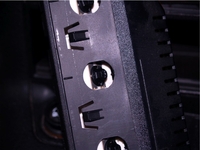



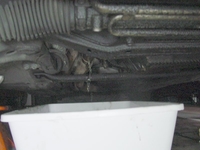
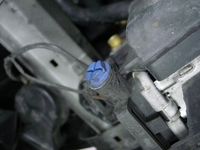



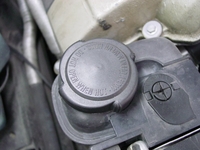


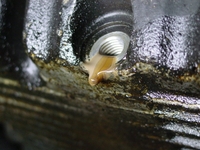




 (4.86 out of 5)
(4.86 out of 5) (4.07 out of 5)
(4.07 out of 5)



